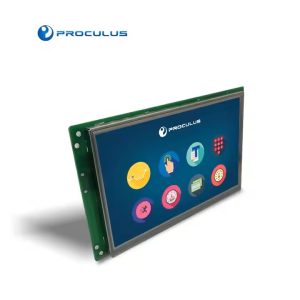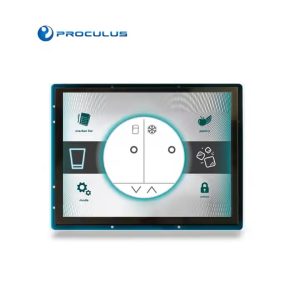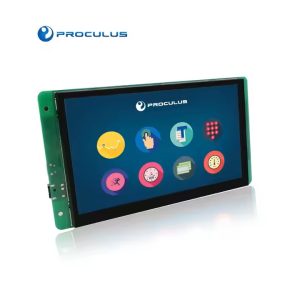TN vs IPS: Which Display Technology is Right for You?
When choosing a monitor, selecting the correct display technology is essential. Two popular panels in the market are TN (Twisted Nematic) and IPS (In-Plane Switching).
To determine which one suits your needs, it is crucial to understand the differences between them.
1. Introduction
As technology advances, the discussion over TN and IPS displays remains relevant. Both technologies have their own advantages and disadvantages, and it is vital to comprehend the distinctions before buying.
2. TN Displays
2.1 What is TN?
TN panels, which stands for Twisted Nematic panels, are a frequently used type of display panel, especially favoured among gamers. They are the go-to option for fast-paced visual requirements, such as competitive gaming.
2.2 How does TN work?
The working principle of TN panels involves the special arrangement of liquid crystal molecules and the application of electric fields to control the transmission of light. Here is a detailed explanation of how it works:
1. Liquid Crystal Alignment:
In TN panels, liquid crystal molecules are arranged in a 90-degree twisted helix between two glass layers. This arrangement allows light to pass through the liquid crystal layer.
2. Polarizing Filters:
TN panels have a polarizing filter at the front and back. These polarizers are typically aligned perpendicularly, allowing only light of a specific orientation to pass. Without an applied voltage, the twisted arrangement of the liquid crystals rotates the light to match the orientation of the second polarizer, allowing it to pass through.
3. Voltage Control:
When voltage is applied to the liquid crystals, their alignment changes. This causes them not to rotate the light, mismatching the orientation of the second polarizer and thus blocking the light.
4. Color and Brightness Control:
Each pixel on the screen is composed of red, green, and blue (RGB) subpixels. By controlling the amount of voltage applied to each subpixel, the arrangement of the liquid crystals can be altered, thereby controlling the color and brightness of each subpixel.
2.3 Pros and Cons of TN Panels
TN panels offer several advantages, including fast response times and refresh rates, smooth on-screen motion, and availability at lower price points. However, they do have limitations. TN displays lack color clarity and contrast, have a narrow viewing angle, and may not provide the same level of image quality as other panel types.
3. IPS Displays
3.1 What is IPS?
IPS panels, or In-Plane Switching panels, were developed to address the limitations of TN panels, particularly in terms of color reproduction and viewing angles. IPS displays boast excellent color contrast, brightness, and image clarity. Unlike TN panels, IPS displays ensure consistent color accuracy regardless of the viewing angle.
3.2 How does IPS work?
1. Molecular Alignment of Liquid Crystals:
In IPS technology, the liquid crystals are oriented parallel to the display plane, as opposed to the perpendicular alignment in TN panels. This in-plane alignment is pivotal for reducing the amount of light scattering, thereby improving image clarity and color consistency.
2. Polarization of Light:
The IPS panel consists of two polarizing filters placed at the front and back. These polarizers are aligned perpendicularly to each other. In the absence of an electric field, the organized structure of the liquid crystals allows light to pass through these polarizers.
3. Electric Field Effect:
When an electric field is applied, it reorients the liquid crystals within the plane of the panel. Unlike TN panels where the liquid crystals tilt, in IPS panels, they swivel around their axis. This reorientation regulates the intensity of light passing through, thus controlling pixel brightness and color.
4. Color and Image Quality:
IPS panels are renowned for their superior color accuracy and consistency. This is due to the uniform distribution of liquid crystals and the precise control of their rotation, which ensures consistent color and brightness across a wide viewing angle.
3.2 Features of IPS Panels
IPS panels offer strong color vibrancy, image clarity, and wide viewing angles. They are known for their accurate color reproduction and excellent black reproduction, eliminating the washed-out look often associated with TN panels.
4. Color Accuracy and Contrast
TN and IPS displays differ significantly in their ability to accurately reproduce colors and contrast. IPS panels excel in color accuracy, while TN panels struggle to produce colors accurately. IPS panels have a wider color range due to the use of 8-bit color panels, resulting in more vivid and accurate colors. In contrast, TN panels typically use 6-bit color panels, resulting in a limited color spectrum.
5. Viewing Angles
Viewing angles play a crucial role in determining the quality of a display, especially when it comes to sharing content or collaborating with others. TN panels have a limited viewing angle, meaning that color clarity and image quality diminish when viewed from angles other than directly in front of the monitor. On the other hand, IPS panels offer a much wider viewing angle, ensuring consistent color accuracy and image quality even when viewed from various angles.
6. Response Time and Refresh Rates
Response time and refresh rates are crucial factors, especially for those seeking smooth, fast-paced visuals.
TN panels, known for their quick response times (often as low as 1 millisecond), have been the preferred option for gaming. IPS panels, though typically slower in response times, have made major strides in this area, with some high-quality IPS displays matching the response times of TN panels without sacrificing color vibrancy or image quality.
Both TN and IPS displays can achieve high refresh rates up to 144Hz, 240Hz, and even 280Hz. Nonetheless, TN screens hold an edge in response time, rendering them a preferred option for competitive gaming environments where split-second reactions are critical.
7. Applications: Graphic Design and Professional Use
For professionals working in graphic design, video editing, or any field that demands accurate color representation, IPS panels are the preferred choice. The wider color gamut and consistent color accuracy of IPS displays allow for precise color calibration and ensure that designs are displayed as intended. IPS monitors provide professionals with the necessary tools to create accurate and visually stunning content.
8. Proculus New Products: IPS HDMI Display
Proculus new IPS HDMI display help you to discover a new way of interface for your equipment! Plug and Play industrial quality touch monitor for your application.
HDMI display is IPS screen for integration into equipment with an HDMI output. It has all the features and advantages of IPS mentioned above.
These displays can be sed in Raspberry Pi or other all-in-one mini PCs; Windows, MacOS, Linux and Android computers.
*Capacitive touch screen
*High-quality LED backlight
*Diverse interface applications

 English
English


